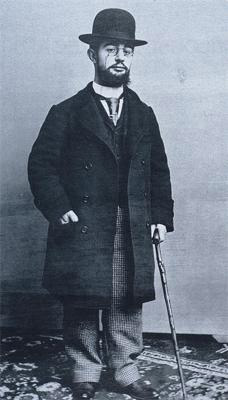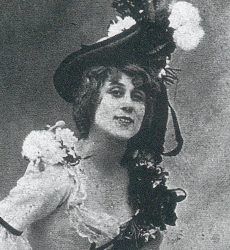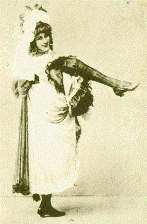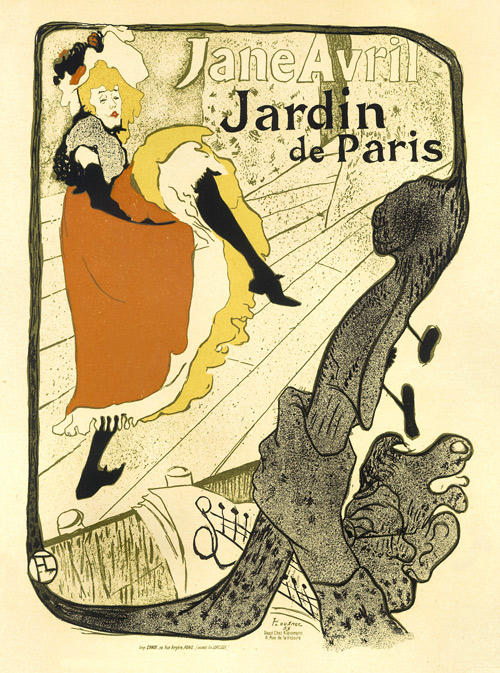Jardin de Paris - Jane
Avril - 1893
VINTAGE FRENCH POSTER - GICLÉE PRINT
This vintage French poster is an example of "Affiche
Artistique",
advertising famous
Parisian Cancan dancer Jane Avril's appearance at the Jardin de Paris music
hall. The artist is Henri de Toulouse-Lautrec
published in 1893.
Dimensions: 18" x 24"
|
Item# |
Title |
Choose: |
Shp Wt |
Price |
Click to buy |
|
1W-ART-064-1 |
Jardin de Paris - Jane Avril, 1893 |
Archival Paper |
2 lbs. |
$29.95 |
Add to Basket |
|
1W-ART-064-5 |
Jardin de Paris - Jane Avril, 1893 |
Repositionable Peel & Stick Fabric* |
2 lbs. |
$39.95 |
Add to Basket |
|
*Peel & Stick: Repositionable
self-adhesive fabric that resists water, wrinkles and tears.
Can be repositioned with ease without damaging walls. No
need for screws, tape or push-pins, simply peel and stick. |
Artists in the late 1800s found
opportunities to present their work to the masses through advertising art
that began to appear as billboards and posters, plastering the streets of
Paris. “Affiche Artistique” was the term that the French used to describe a
poster that contained artistic expression. The art was so impressive
to the public, people began to collect the posters as soon as they went up,
which is why they are so scarce today. Artists such as Henri
Toulouse-Lautrec, Alphonse Mucha, Jules Chéret, Théophile-Alexandre
Steinlen, Pierre Bonnard and Eugène Grasset contributed to the creative body
of work that became what some called “a free museum for the masses”.
The craze for collecting these examples of modern art was even given the
name, "affichomanie", meaning “artistic poster mania”. Collectors today pay
hundreds, if not thousands for original prints of these rare posters.
We offer these exceptional vintage poster reproductions in
the highest possible print quality. Superior to most reproductions
currently available on the market, our gallery quality prints are suitable
for display in an art gallery or museum. We begin with an ultra high
resolution scan of the original artifact which we leave untouched, leaving
intact the slightly distressed vintage character desirable in a collectible
piece of this era. Our state of the art, giclée reproduction process
uses the latest technology: microscopic droplets of ink that render such a
high resolution, that every minute detail of the original is intact.
Every pen line and brush stroke is visible. Even very faint pencil
lines are also visible due to the incredibly high quality of the
reproduction process. Our 8 color, archival quality inks and giclée
printing process provide the most accurate color reproduction & are proven
to last over a hundred years. Posters are available printed on museum
quality archival paper or on repositionable media that allow you to plaster
your walls with the “Affiche Artistique”, just as they were originally
intended to be displayed.
About the artist:
Henri de Toulouse-Lautrec
French, 1864 – 1901
 Creating
an overnight sensation with his first poster, a depiction of the Moulin
Rouge dance hall in 1891, Henri Toulouse-Lautrec became synonymous with the
Post-Impressionist style. Born at the Chateau de Malromé near Albi, he
father was the Comte Alphonse de Toulouse-Lautrec-Monfa, descendant of the
Counts of Toulouse and Lautrec and the “Viscounts of Monfa”. His early
life was privileged and included informal art lessons while living in Paris
with his mother. Henri suffered some genetic problems that resulted in
his legs failing to grow to normal size, leaving him only 5’1”, with normal
torso but child-size legs. His mother took Henri back to Albi and
pursued treatments trying to restore his health and growth, but to no avail.
Returning to Paris in 1882, Lautrec settled in Montemarte, the center of the
bohemian artistic culture in Paris, where he studied painting under Léon
Bonnat and Fernand Cormon. Lautrec rarely left Montemarte for the next
twenty years, becoming a friend to both Vincent and Theo Van Gogh and many
other artists of the era. Lautrec died in 1901 at the young age of
thirty-six. Creating
an overnight sensation with his first poster, a depiction of the Moulin
Rouge dance hall in 1891, Henri Toulouse-Lautrec became synonymous with the
Post-Impressionist style. Born at the Chateau de Malromé near Albi, he
father was the Comte Alphonse de Toulouse-Lautrec-Monfa, descendant of the
Counts of Toulouse and Lautrec and the “Viscounts of Monfa”. His early
life was privileged and included informal art lessons while living in Paris
with his mother. Henri suffered some genetic problems that resulted in
his legs failing to grow to normal size, leaving him only 5’1”, with normal
torso but child-size legs. His mother took Henri back to Albi and
pursued treatments trying to restore his health and growth, but to no avail.
Returning to Paris in 1882, Lautrec settled in Montemarte, the center of the
bohemian artistic culture in Paris, where he studied painting under Léon
Bonnat and Fernand Cormon. Lautrec rarely left Montemarte for the next
twenty years, becoming a friend to both Vincent and Theo Van Gogh and many
other artists of the era. Lautrec died in 1901 at the young age of
thirty-six.
Considered one of the great
Post-Impressionist painters, “La blanchisseuse”, an early painting by
Toulouse-Lautrec, sold for $22.4 million at a Christie’s auction in 2005.
Jane Avril
French, (1868 – 1943)
 Born
Jeanne Beaudon in 1868 in Belleville, France, young Jeanne was an abused
runaway child when she found herself under the care of Dr. Jean-Martin
Carcot at the Salpêtrière Hospital in Paris. She was diagnosed with a
neurological disorder called “St Vitus’ Dance”(Syndenham’s Chorea), a
disease characterized by uncontrollable jerking movements. According
to Jeanne, she attended a social dance given for the patients, where she
first discovered Born
Jeanne Beaudon in 1868 in Belleville, France, young Jeanne was an abused
runaway child when she found herself under the care of Dr. Jean-Martin
Carcot at the Salpêtrière Hospital in Paris. She was diagnosed with a
neurological disorder called “St Vitus’ Dance”(Syndenham’s Chorea), a
disease characterized by uncontrollable jerking movements. According
to Jeanne, she attended a social dance given for the patients, where she
first discovered
 that
dancing seemed to cure her condition and allowed her release from the
hospital. that
dancing seemed to cure her condition and allowed her release from the
hospital.
Adopting the stage name Jane Avril, she found work as a dancer at local
Parisian venues, eventually becoming a dancer at the Moulin Rouge in 1889.
Jane Avril is described as extremely thin and was still prone to jerky
movements and contortions. These were the aspects to Avril’s dance
that made her unique and beloved by her audience. She became a
headliner for the popular Parisian music hall Jardin de Paris, and in 1893,
she was painted by Toulouse-Lautrec for a poster advertising her appearance
there. She became famous for her Cancan, and was installed as the
replacement for the most famous Cancan dancer in Paris, Louise Weber, at the
Moulin Rouge in 1895.
Jane Avril married German artist Maurice Biais in 1910 and moved to the
outskirts of Paris. The marriage did not stay a happy one and Avril
lived in poverty following his death in 1925. She died in Paris at the
age of 45.
|
 |